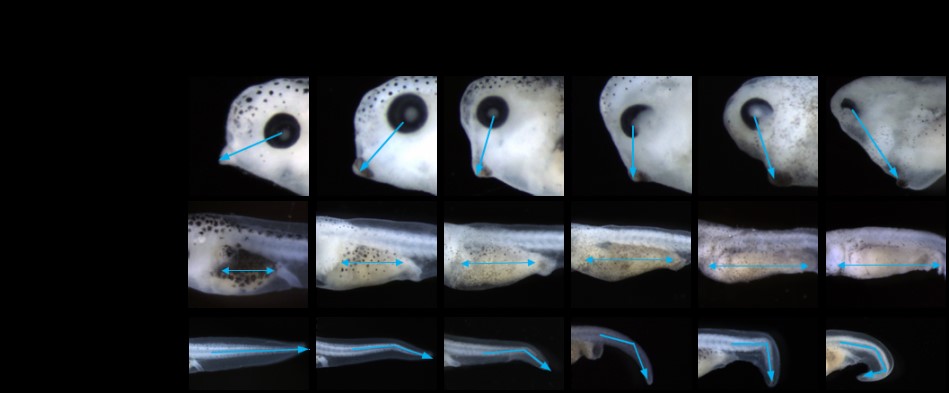Use of the enhanced frog embryo teratogenesis assay-Xenopus (FETAX) to determin chemically-induced phenogypic effects
The frog embryo teratogenesis assay-Xenopus (FETAX) is an established method for the evaluation of the developmental toxicities of chemicals. To develop an enhanced FETAX that is appropriate for common environmental contaminants, we exposed Xenopus tropicalis embryos to eight compounds, including tributyltin, triphenyltin, CdCl2, pyraclostrobin, picoxystrobin, coumoxystrobin, all-trans-retinoic acid and 9-cis-retinoic acid. Multiple malformations were induced in embryos particularly following exposure to tributyltin, triphenyltin and pyraclostrobin at environmentally relevant concentrations. Based on the range of observed malformations, we proposed a phenotypic assessment method with 20 phenotypes and a 0–5 scoring system. This derived index exhibited concentration-dependent relationships for all of the chemicals tested. Furthermore, the phenotype profiles were characteristic of the different tested chemicals. Our results indicate that malformation phenotypes can be quantitatively integrated with the primary endpoints in conventional FETAX assessments to allow for increased sensitivity and measurement of quantitative effects and to provide indicative mechanistic information for each tested chemical.
Fig. 2. Phenotype classification and scoring system for X. tropicalis embryos. This system contains twenty phenotypes with six grades (0–5) for each phenotype based on the degree of malformation. The sizes of the eyes and changes in the skin pigmentation include two opposite sub-phenotypes.
Fig. 4. The profile of the phenotypes of malformation induced in X. tropicalis embryos by the selected compounds. Abbreviations: ae, abdominal edema; bn, bent notochord; bt, bent tail; cfd, craniofacial edema; dcg, displaced cement gland; eh, edema in heart; ep, edema in proctodaeum; elp, enlarged proctodaeum; et, enlarged trunk; esc, eye size changes; gmc, gut miscoiling; mcp, microcephaly; nf, narrow fin; pc, pigmentation changes; pe, protruding eye; sta, short tail axis; ss, somite segmentation; st, stretched trunk; sb, stunted body; te, turbid lens of eyes.
List of relate publications:
-
Science of The Total Environment ,
2015 ,
508
: 258-265.


